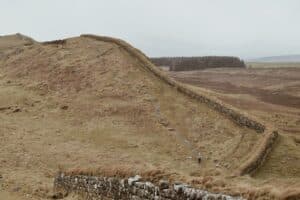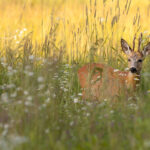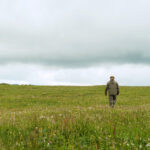Rural Britain is renowned for its stunning natural beauty and diverse landscapes, from rolling hills to dramatic coastlines. It offers visitors a plethora of opportunities to explore the countryside, with numerous walks available that offer captivating views.
This article will provide an overview of some of the top countryside walks in Britain, outlining their individual features and characteristics. With so much to discover in rural UK, these shortlisted routes provide the perfect starting point for those looking to explore this spectacular country.
And there’s nowhere better to start your great British adventure than English Cottage Vacation! You can’t go wrong with a luxury 18th-century thatched cottage in the glorious Dorset countryside, where VIP treatment awaits. Co-host and chauffeur/guide Nathan will see to it that you get to wherever you need to be in executive comfort aboard a luxury Mercedes van; while co-host and resident chef Laura will lavish you with delicious gourmet meals, and even packed picnics to take on your rambles!
Here’s what’s in store for hiking enthusiasts looking for amazing countryside walks in Britain:
The South West Coast Path
The South West Coast Path is one of the longest and most beautiful walking trails in England, offering stunning sea views and a chance to explore some of Britain’s most historic sites. But what makes it so special?
Stretching 630 miles from Minehead in Somerset all the way around to Poole Harbour in Dorset, this National Trail takes walkers through wild moorland, rolling hillsides and picturesque coastal villages; as well as providing unrivalled opportunities for wildlife spotting along the way.
The route passes through two UNESCO Biosphere Reserves – North Devon Biosphere Reserve and Cornwall Area of Outstanding Natural Beauty – ensuring that conservation remains at its heart.
As part of the journey, visitors can discover hidden coves on coveted beaches, admire spectacular cliffs at Land’s End or take a boat trip out to Lundy Island off the north coast of Devon.
With over 3,500 years worth of history to uncover – including Iron Age hill forts, Neolithic monuments and lighthouses constructed during Napoleonic times – there are countless places to explore.
Through taking time to appreciate these treasures, each step taken on the South West Coast Path truly becomes an adventure like no other.
From here we move onto Hadrian’s Wall Trail: an iconic path running across northern England with its own unique story awaiting discovery…

Hadrian’s Wall Trail
Hadrian’s Wall Trail is a long distance walking route that follows the remains of Hadrian’s Wall, which was built by the Romans in 122 AD. This trail stretches across 84 miles (135 km) and passes through some of England’s most stunning countryside, taking walkers along ancient Roman roads, past crumbling forts and settlements, and offering views of the rolling hillsides and valleys of Northumberland National Park.
Along this trail lies evidence of the culture created during the time when Hadrian’s Wall was built; from archaeological sites to Roman artefacts still scattered around, visitors can learn about this fascinating period in history.
The northernmost part of the wall runs from Bowness on Solway to Wallsend near Newcastle upon Tyne. In addition to observing spectacular natural beauty, those who traverse this section will have an opportunity to explore other historical sites nearby such as Housesteads Fort, Cawfields Quarry, Sycamore Gap and Steel Rigg.
Other interesting attractions include Crag Lough Nature Reserve with its Bronze Age hillfort ruins, Lanercost Priory which dates back to 1166 AD, and Halton Chesters where visitors may admire perfectly preserved sections of Hadrian’s Wall.
Visitors should also take note that many parts of the trail are remote or isolated so it is important to be adequately prepared before embarking on any journey here. It is recommended that each person carries at least 1 litre of water per hour they plan to spend walking plus additional snacks for sustenance throughout their excursion.
Of course, if you’re a guest of English Cottage Vacation, all such considerations would be taken care of for you!
Additionally, proper weather-appropriate clothing should always be worn as conditions can change quickly while out exploring.
The Cotswold Way
The Cotswold Way is a long-distance walking route of 102 miles that runs through some of the most picturesque and rural parts of England.
Exploring the Cotswold Way provides individuals with the opportunity to experience the beauty of England’s Cotswold hills and visit many small market towns, villages and churches.
The Cotswold Way is a great way to observe a range of wildlife, with badgers, foxes, deer, buzzards and herons often sighted on the walk.
Additionally, the Cotswold Way boasts a diverse range of flora and fauna, with a variety of wild flowers, butterflies, birds and other creatures inhabiting the area.
Exploring The Cotswold Way
The Cotswold Way is a renowned 102-mile long walking route traversing the picturesque villages of England’s rural county of Gloucestershire. It follows and connects the rolling hills, meadows, woodlands and limestone escarpments that are so typical to this region known as The Cotswolds.
Taking in spectacular views along its course and offering opportunities for wildlife spotting, it is no wonder why year after year thousands of people flock to complete all or part of this trail.
Starting from Chipping Campden in the north, the path winds southwards towards Bath; with many sections running parallel to Britain’s oldest road, The Fosse Way. This allows ramblers to take advantage of numerous pubs, restaurants, tea rooms and cafes en route should they wish to stop off before continuing their journey through some truly breathtaking scenery.
Many sleepy hamlets can be discovered nestled amongst lush green fields where grazing sheep dot the landscape providing an idyllic backdrop not easily forgotten.
Amongst a plethora of flora and fauna species residing here, birdwatchers may catch sight of buzzards soaring overhead whilst wildflowers bring bursts of colour during springtime months when nature runs riot across these ancient hillsides.
Indeed it does not come as a surprise that much of The Cotswold Way has been designated an Area Of Outstanding Natural Beauty; highlighting just how special this area really is.
A fitting way indeed to explore these lands steeped in history and beauty alike!
Wildlife Of The Cotswold Way
The Cotswold Way is a renowned 102-mile long walking route that traverses the picturesque villages of England’s rural county of Gloucestershire. It follows and connects rolling hills, meadows, woodlands and limestone escarpments typical to this region known as The Cotswolds.
Along its course, one may be able to observe wildlife in their natural habitat. Birdwatchers have the opportunity to spot buzzards soaring overhead whilst flower spotting enthusiasts can take in bursts of colour during springtime months when nature runs riot across these ancient hillsides. Additionally, many species of flora and fauna reside here allowing visitors a chance to explore diverse ecosystems while taking in spectacular views of the area’s landscape.
Thus, it comes as no surprise that much of The Cotswold Way has been designated an Area Of Outstanding Natural Beauty; highlighting just how special this area really is for all kinds of wildlife enthusiasts.

The Great Glen Way
The Great Glen Way is an enchanting path that winds its way through the majestic landscape of Scotland. From a distance, it appears as a silver thread against the striking backdrop of rugged mountain peaks and shimmering lochs. The walk itself is nothing short of breathtaking; stretching for 80 miles across some of Scotland’s most picturesque landscapes.
It provides a wonderful opportunity to:
- Appreciate the region’s rich history
- Spot rare wildlife including red deer, golden eagles and ospreys
- Enjoy remarkable views of mountains, glens and rivers
The route begins in Fort William on the west coast before heading eastwards along Loch Linnhe then up Glen Nevis towards Ben Nevis, Britain’s highest peak. After passing through dramatic mountain scenery, it descends into Strathglass where you can explore tranquil woodland trails before emerging onto stunning moorland with views to the distant sea.
The trail passes close by Inverness Castle before crossing over the River Ness and finishing at Inverness Cathedral in the city centre.
At every turn, there are opportunities for bird watching or simply admiring magnificent panoramas from high vantage points – making this one of England’s top countryside walks for those looking to explore rural beauty at its finest. With so many delights awaiting discovery, it is no surprise that The Great Glen Way has become such a popular choice for outdoor enthusiasts seeking an unforgettable experience amongst nature’s wonders.
With anticipation building for what lies ahead, it is time now to move onward to discover further delights on the Ridgeway National Trail.
Ridgeway National Trail
The Ridgeway National Trail is an ancient trackway that stretches 87 miles across Britain, running from Overton Hill in Wiltshire to Ivinghoe Beacon in Buckinghamshire.
It provides a unique opportunity for visitors to explore the rich history of England’s rural landscape. Along its route, people can experience majestic views and observe wildlife, as well as discover many fascinating archaeological sites dating back to prehistory. The trail traverses over rolling hills and chalk downland, offering off-road activities such as walking or cycling for those looking for adventure.
Traverse through picturesque villages and historic monuments enroute, including the Uffington White Horse – thought to be one of the oldest monumental statues in Europe. Follow Iron Age hillforts perched atop of high ridges like Barbury Castle and Wayland’s Smithy; these landmarks are remnants of a bygone era which remain today in remarkable condition.
Visitors will also come across Bronze Age burial mounds at Liddington Castle and prehistoric standing stones along Ashdown Ridge.
Nature enthusiasts should keep their eyes peeled for rare species like skylarks, brown hares and stone curlews within this untouched region of England; there’s something new around every corner!
Thames Path
The Thames Path is a 184 mile long walking route that follows the River Thames through both rural and urban England.
It is a popular route for walkers and cyclists to explore the beauty of the English countryside and its diverse wildlife, as well as views of some iconic London landmarks.
Along the Thames Path, visitors can observe a range of native species, from birds such as ducks, swans and coots, to mammals like badgers and foxes.
The Thames Path is a great way to explore the natural beauty of rural England and its rich variety of wildlife.
Exploring The Thames Path
Beginning its journey in the town of Kemble, Gloucestershire, England and concluding at The Thames Barrier near London, the Thames Path is an idyllic riverside walk that offers a plethora of opportunities to explore both urban and rural wildlife.
For those who wish to observe some of the numerous species living beside this ancient river, there are few walks better suited than the Thames Path.
Alongside ducks and swans, visitors may also spot cormorants and kingfishers swooping around them as they meander along.
Additionally, otters have been known to thrive in certain areas due to the abundance of fish available.
Consequently, with such a diverse selection of flora and fauna on offer throughout its 184 miles, it is easy to understand why exploring the Thames Path has become so popular amongst nature enthusiasts looking for respite from everyday life.
From historic townships like Henley-on-Thames to tranquil countryside views by Cookham Lock, the wonders of rural England can be discovered all along this beautiful route.
Wildlife On The Thames Path
Birdwatching is a popular activity for those visiting the Thames Path.
A variety of species such as ducks, swans and cormorants can be seen along the riverbanks, while kingfishers are known to swoop around visitors who meander along its 184-mile length.
Additionally, otters can often be spotted due to the abundance of fish in certain areas.
River cruises also offer a great opportunity to observe wildlife living near the river’s edges from a unique perspective.
From Henley-on-Thames to Cookham Lock, exploring the wonders of rural England on foot or by boat can bring about an unforgettable experience that all nature enthusiasts should enjoy at least once in their lifetime.
Northumberland Coast Path
‘The journey of a thousand miles begins with one step’ – this Chinese proverb perfectly encapsulates the Northumberland Coast Path, an 84 mile scenic route that meanders along England’s northeast coastline.
The path passes through some of the UK’s most ancient and untouched countryside, offering stunning views and opportunities for wildlife spotting.
Beginning at Cresswell in the north, walkers can take delight in exploring beautiful beaches, dramatic cliffs and picturesque villages as they traverse southwards along the coastline.
From Bamburgh to Berwick-Upon-Tweed there are many stunning sights to be seen; from historic castles perched atop towering headlands to freshwater streams harbouring local wildlife such as otters and seals.
As it travels south towards its final destination of Marshall Meadows Bay near Berwick-upon-Tweed, the path is punctuated by sweeping bays, secluded coves and breathtaking hilltop vistas providing ample opportunity for hikers to marvel at nature’s beauty.
Whether you’re looking for a short stroll or a leisurely day out, the Northumberland Coast Path promises an unforgettable adventure into rural England’s hidden gems.
Where Will You Choose For Your Countryside Walks In Britain?
The beauty of rural Britain is truly captivating.
The South West Coast Path, Hadrian’s Wall Trail, Cotswold Way, and the Great Glen Way are all excellent paths to explore for those seeking majestic views.
For a more tranquil experience, the Ridgeway National Trail provides an enchanting journey through rolling hills and ancient sites.
Enjoy a leisurely stroll along the Thames Path or take in the stunning vistas on Northumberland Coast Path.
All these countryside walks in Britain offer a chance to indulge in nature’s wonders while providing some much-needed respite from everyday life.
From magnificent castles and abbeys to vibrant wildlife havens, there’s something special waiting around every corner that will inspire awe and wonderment in even the most jaded traveller.
Reach out today to plan your all-inclusive, luxury English Cottage Vacation and discover some of the most amazing countryside walks in Britain!





